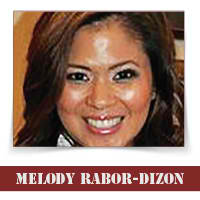
By: Melody Rabor-Dizon
What is it? Coronaviruses (CoV) are a large family of viruses that cause illness ranging from the common cold to more severe diseases such as Middle East Respiratory Syndrome (MERS-CoV) and Severe Acute Respiratory Syndrome (SARS-CoV). A novel coronavirus (nCoV) is a new strain that has not been previously identifi ed in humans.
How did it evolve? Coronaviruses are zoonotic, meaning they are transmitted between animals and people. Detailed investigations found that SARS-CoV was transmitted from civet cats to humans and MERS-CoV from dromedary camels to humans. Several known coronaviruses are circulating in animals that have not yet infected humans.
What are the signs and symptoms? Common signs of infection include respiratory symptoms, fever, cough, shortness of breath and breathing diff culties. In more severe cases, infection can cause pneumonia, severe acute respiratory syndrome, kidney failure and even death.
How can I protect myself and my loved ones? World Health Organization (WHO) and Center for Disease Control (CDC)’s standard recommendations for the general public to reduce exposure to and transmission of a range of illnesses are as follows, which include hand and respiratory hygiene, and safe food practices:
• Frequently clean hands by using alcohol-based hand rub or soap and water;
• When coughing and sneezing cover mouth and nose with flexed elbow or tissue – throw tissue away immediately and wash hands; • Avoid close contact with anyone who has fever and cough;
• If you have fever, cough and diffi culty breathing seek medical care early and share previous travel history with your health care provider;
• The consumption of raw or undercooked animal products should be avoided. Raw meat, milk or animal organs should be handled with care, to avoid cross-contamination with uncooked foods, as per good food safety practices.
SHOULD I WEAR A MASK? OR SHOULDN’T I
It is intended for public health and infection prevention and control (IPC) professionals, health care managers, health care workers and community health workers. It will be revised as more data become available. With the current information available, it is suggested that the route of human-to-human transmission of 2019-nCoV is either via respiratory droplets or contact. Any person who is in close contact (within 1 meter) with someone who has respiratory symptoms (e.g., sneezing, coughing, etc.) is at risk of being exposed to potentially infective respiratory droplets. Medical masks are surgical or procedure masks that are fl at or pleated (some are like cups); they are affi xed to the head with straps.
General Advice Wearing A medical mask is one of the prevention measures to limit spread of certain respiratory diseases, including 2019- nCoV, in affected areas. However, the use of a mask alone is insufficient to provide the adequate level of protection and other equally relevant measures should be adopted. If masks are to be used, this measure must be combined with hand hygiene and other IPC measures to prevent the human-tohuman transmission of 2019-nCov. WHO has developed guidance for home care and health care settings on infection prevention and control (IPC) strategies for use when infection with 2019-nCoV is suspected. Wearing medical masks when not indicated may cause unnecessary cost, procurement burden and create a false sense of security that can lead to neglecting other essential measures such as hand hygiene practices. Furthermore, using an Infection prevention and control of epidemic- and pandemic prone acute respiratory infections in health care.
Community setting Individuals without respiratory symptoms should: – avoid agglomerations and frequency of closed crowded spaces; continue preventive measures. A medical mask is not required, as no evidence is available on its usefulness to protect non-sick persons. If masks are used, best practices should be followed on how to wear, remove, and dispose of them and on hand hygiene action after removal. Individuals with respiratory symptoms should: – wear a medical mask and seek medical care if experiencing fever, cough and diffi culty breathing, as soon as possible or in accordance with to local protocols; – follow the below advice regarding appropriate mask management. (To be continued on next issue)
 VIA Times – February 2020 Issue Vital News, Vibrant VIews for Asian Americans in Chicago & Midwest
VIA Times – February 2020 Issue Vital News, Vibrant VIews for Asian Americans in Chicago & Midwest

